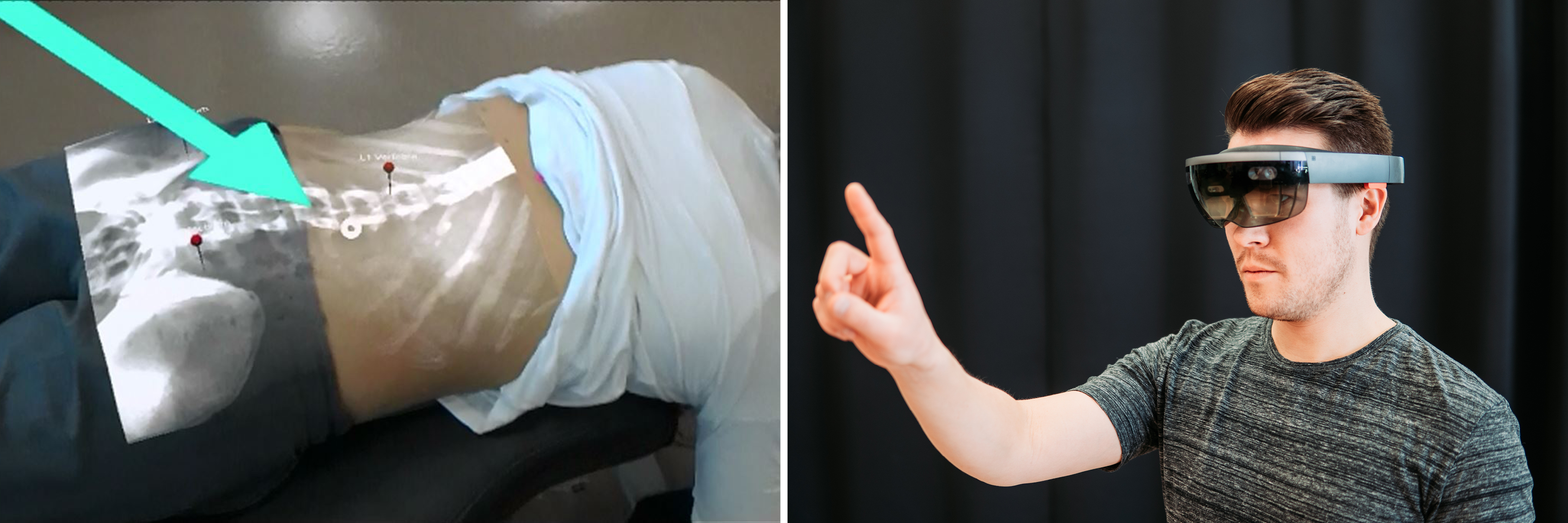ProjectDR
ProjectDr is an augmented reality software platform which enables diagnostic images to be projected onto the skin surface of a patient. This technology also corrects the image to account for distortion caused by skin contours as well as the size and shape of the individual. The software allows for input of any number of 2D or 3D diagnostic image formats while output can be viewed through see-through or projected displays.
ProjectDr Applications
Image Guided Surgery: Patient-specific 3D reconstructed CT images projected on to the patient can be visualized in high definition by the surgeon through mixed-reality goggles, like the Hololens or Meta 2, or a laser scanning projector. Not only does this allow the surgeon to visualize the operation, but it allows them to do so with both hands free while keeping their gaze directly on the patient. If desired, the same image can be seen concurrently by the entire operating room staff through a ceiling projection system. This has the potential to revolutionize surgery procedures and education, and vastly improve patient outcomes.
Conservative Care: Patient-specific images can be displayed through low-cost mixed-reality goggles to a variety of non-surgical clinicians, such as physiatrists, chiropractors, physical therapists, or massage therapists, who require guidance for conservative care procedures such as injections or spinal manipulations. This development is important because when imaging is disconnected from the patient by the clinician, it can create incorrect interpretations of the image with respect to the patient, reduce safety, and dehumanize patients. We plan to study how placing the image back on the patient can mitigate these important problems.
Patient Education: To enhance patient-centered health care, clinicians, health-care workers, and educators can project patient-specific, generic, or video images onto patients during consultations or discussions. The patients can then see the projections on their own bodies through any flat-screen TV or monitor. This process can be used to inform patients about procedures they are receiving, obtain informed consent, or display anticipated results of procedures such as surgery, tattoo removal, or even how and where to perform CPR.
Medical Teaching: ProjectDR has the potential to enhance eduation as well. Generic X-rays of the spine can be projected by a standard LED projector onto any person to teach anatomy, location of underlying organs, how to listen to the heart, or other topics where students need to visualize underlying anatomy. With this technology, the historic need for memorizing anatomy or palpating landmarks has now been eliminated. The Kawchuk lab developed an application for the HoloLens that allows the users to place a lumbar spine model into their workspace. This application can also be mapped onto palpated spine landmarks to superimpose the spine model onto the patient's back.
